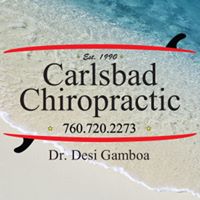Spinal Decompression Information
How is Spinal Decompression Therapy different from regular traction?
The award winning Triton® computer is the key. It controls the variations in the traction pull allowing for spinal decompression and eliminating muscle guarding that is typical in conventional traction devices. The pre-programmed patterns for ramping up and down the amount of axial distraction allows for higher levels of spinal decompression and disc re-hydration.
Who can benefit from Spinal Decompression Therapy?
Anyone and everyone can benefit from Spinal Decompression. The discs are the padding in-between each vertebrae. All Range of Motion takes place at the disc. If we did not have a disc and were just solid bone we would in essence be unable to move and have any range of motion. Therefore all bending and motion of the spine takes place at the disc. The disc contains 88% water and fibro cartilage material. With age, weight, and gravity compressing the disc, the disc wears thin over time. Here is an easy way I can explain what a disc is like between the spine: The disc as I explain to patients is kind of like a jelly donut, whereas the outer portion of the disc is made up of fibro cartilage and the inner portion is like the jelly of the donut. Sometimes people over exert the disc and the fibro cartilage tears, then the jelly-like material inside the disc comes out and now we have what is called a herniated disc. When we have someone with a herniated disc we tend to see people with shooting pains down their leg and weakness is sometimes involved.
Are there conditions where Spinal Decompression Therapy is not indicated?
Spinal decompression therapy is not recommended for pregnant women, patients who have severe osteoporosis, severe obesity or severe nerve damage. Spinal surgery with instrumentation (screws, metal plates or cages) is also contraindicated in many cases. However, spinal decompression therapy after bone fusion or non-fusion surgery, can be performed.
Are the sessions painful, how many will be needed and what is the cost?
In almost all cases, the treatments are completely painless. In fact, most patients watch TV or sleep during spinal decompression session. The specific treatment plan will be determined by the doctor after your examination. Based on current research and our clinical experience, the best results have been achieved utilizing 18-20 sessions over a 6 to 10 week period.
In most cases, insurance may cover or supplement some of the cost of your care. In most cases the typical office visit is less than $50.00.
Do most patients receive therapy and rehabilitative exercises in addition to Spinal
Decompression Therapy?
To reduce inflammation and assist the healing process, supporting structures are treated with passive therapies (ice/heat/muscle stimulation), chiropractic adjustments (as indicated) and/or active rehabilitation in order to strengthen the spinal musculature.
How do I get started?
We want make it easy for you to learn if you are a candidate for Spinal Decompression Therapy. Please contact our office at 760-720-2273 for more information and to learn if spinal decompression is right for you.
What is DTS Spinal Decompression Therapy?
DTS Spinal Decompression Therapy is FDA cleared and has been clinically proven with a high success rate for pain associated with herniated or bulging discs…even after failed surgery. It is a non-surgical therapy for the relief of back and leg pain or neck and arm pain. During this procedure, by cycling through distraction and relaxation phases and by proper positioning, a spinal disc can be isolated and placed under negative pressure, causing a vacuum or “unloading” effect within it.
What can this vacuum effect do?
The vacuum effect accomplishes two things. From a mechanical standpoint, disc material that has protruded or herniated outside the normal confines of the disc can be pulled back within the disc by the vacuum created within the disc. Also, the vacuum within the disc stimulates growth of blood supply, secondarily stimulating a healing response. This results in pain reduction and proper healing at the injured site.
What system is used for this purpose?
After a significant amount of research, Dr. Gamboa chose the Triton® DTS™ 600 Series system manufactured by the Chattanooga Group, the premier manufacturer of physical medicine equipment. Our clinic has the brand new 600 Series table and computerized head which is the most sophisticated and technologically advanced unit in the world. No office has a more “state of the art” spinal decompression system. In fact, the new Triton® System is so revolutionary that it won the 2006 Australian Design Award in the “Medical and Scientific” category. It is also the system that the University of Texas purchased for the treatment of its world-class athletes. We also selected the Triton® DTS systems due to its ability to treat discs in both the neck and the low back.

